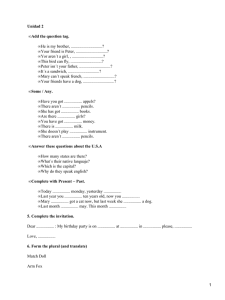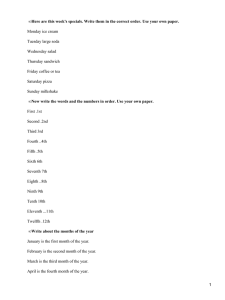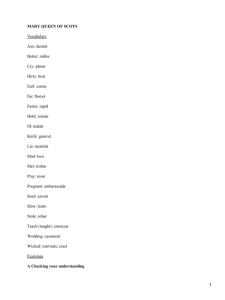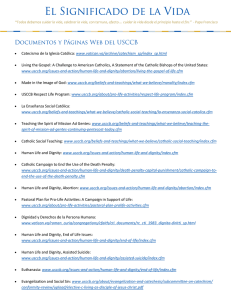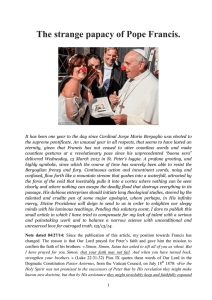The Entity: Five Centuries Of Secret Vatican Espionage
Anuncio
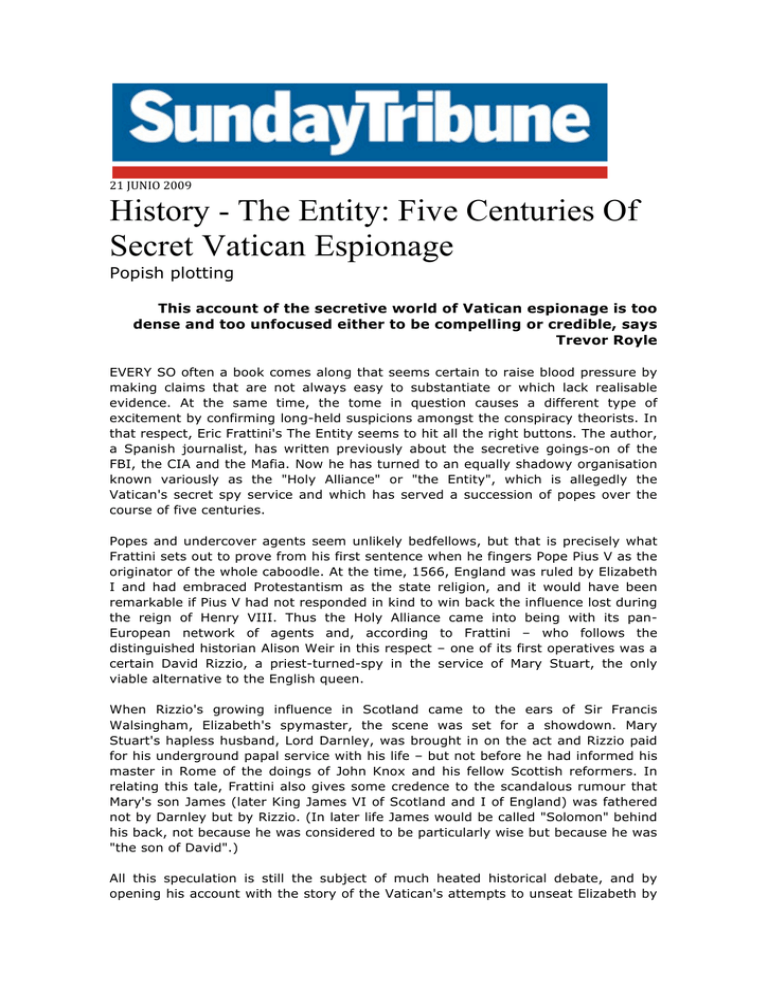
21 JUNIO 2009 History - The Entity: Five Centuries Of Secret Vatican Espionage Popish plotting This account of the secretive world of Vatican espionage is too dense and too unfocused either to be compelling or credible, says Trevor Royle EVERY SO often a book comes along that seems certain to raise blood pressure by making claims that are not always easy to substantiate or which lack realisable evidence. At the same time, the tome in question causes a different type of excitement by confirming long-held suspicions amongst the conspiracy theorists. In that respect, Eric Frattini's The Entity seems to hit all the right buttons. The author, a Spanish journalist, has written previously about the secretive goings-on of the FBI, the CIA and the Mafia. Now he has turned to an equally shadowy organisation known variously as the "Holy Alliance" or "the Entity", which is allegedly the Vatican's secret spy service and which has served a succession of popes over the course of five centuries. Popes and undercover agents seem unlikely bedfellows, but that is precisely what Frattini sets out to prove from his first sentence when he fingers Pope Pius V as the originator of the whole caboodle. At the time, 1566, England was ruled by Elizabeth I and had embraced Protestantism as the state religion, and it would have been remarkable if Pius V had not responded in kind to win back the influence lost during the reign of Henry VIII. Thus the Holy Alliance came into being with its panEuropean network of agents and, according to Frattini – who follows the distinguished historian Alison Weir in this respect – one of its first operatives was a certain David Rizzio, a priest-turned-spy in the service of Mary Stuart, the only viable alternative to the English queen. When Rizzio's growing influence in Scotland came to the ears of Sir Francis Walsingham, Elizabeth's spymaster, the scene was set for a showdown. Mary Stuart's hapless husband, Lord Darnley, was brought in on the act and Rizzio paid for his underground papal service with his life – but not before he had informed his master in Rome of the doings of John Knox and his fellow Scottish reformers. In relating this tale, Frattini also gives some credence to the scandalous rumour that Mary's son James (later King James VI of Scotland and I of England) was fathered not by Darnley but by Rizzio. (In later life James would be called "Solomon" behind his back, not because he was considered to be particularly wise but because he was "the son of David".) All this speculation is still the subject of much heated historical debate, and by opening his account with the story of the Vatican's attempts to unseat Elizabeth by replacing her with her cousin Mary, Frattini sets out his stall for what follows in the rest of the narrative. Ahead lies a murky succession of political assassinations, kidnappings, regime changes, arms sales and, in more recent times, money laundering. The main problem with Frattini's account is it's too dense, too hurried and too entangled with names and incidents, many of which go nowhere. His sources also leave much to be desired. All too often they are based on well-known stories which have been around for years, and it simply will not do to thank those "who have provided invaluable aid whose names I prefer not to have appear in this book". Somewhere within this book there is a decent enough account of the Vatican's involvement in espionage, but five centuries is too long a span, and Frattini lacks the ability to simplify his argument and to organise his material into a clear narrative. One final point: he seems to suggest that it is shocking that the Vatican possesses an espionage service. The real surprise would be if it did not.

